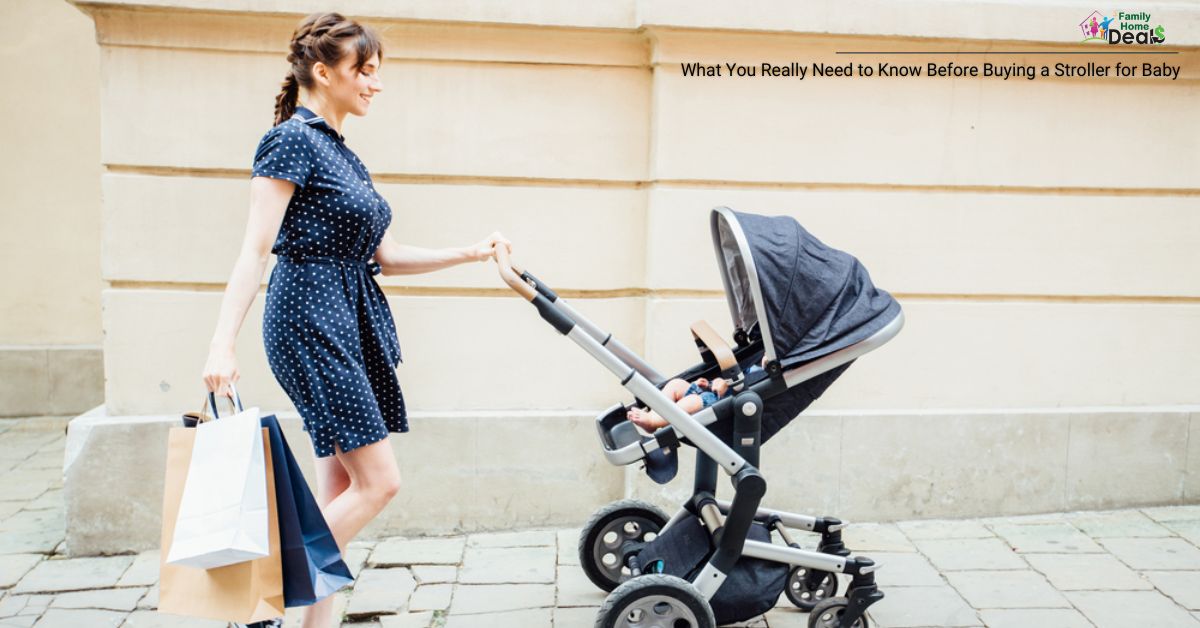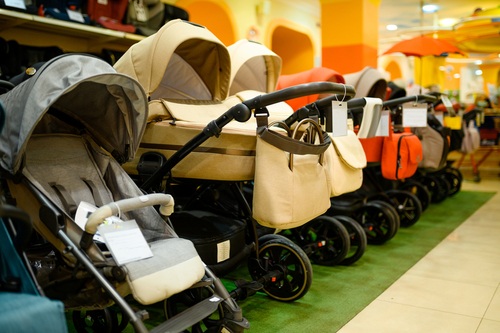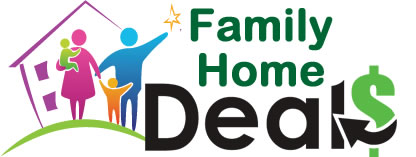
Bringing a new baby into your life means getting a lot of gear — and one of the most important pieces is the stroller. But beyond adorable designs and flashy features lies a world of trade-offs, safety specs, and practical details. If you go in uninformed, buying a stroller for a baby can become overwhelming, leave you with regrets (or worse, safety risks), and waste both money and effort.
This guide is your go-to roadmap. I’ll walk you step by step through what matters most: safety standards, functionality, lifestyle fit, cost versus value, and common mistakes parents make. By the end, you’ll have a clear idea of how to choose the stroller that works for you and your baby, not just what looks good on the shelf. Let’s dive into what you need to consider before buying a stroller for your baby so that each walk becomes enjoyable, not stressful.
1. Why Choosing Right Matters
-
Safety issues are real. Thousands of children visit emergency rooms annually due to stroller and carrier injuries. Issues often involve falls, tip-overs, faulty restraints, or frame failure.
-
Daily usability. You’ll be using the stroller many times a week — in the neighborhood, for groceries, travel, or just popping in and out of the car. If it’s heavy, bulky, or doesn’t fit your daily routines, it quickly becomes more of a burden than a help.

2. Key Safety Standards & Regulations
Knowing what rules strollers are (or should be) held to protects you and your baby.
| Standard / Regulation | What It Covers | Why It Matters |
|---|---|---|
| ASTM F833 (U.S.) / ASTM F833-21 (updated) | Structural integrity (frame, folding, latches), restraint systems, brakes, wheel detachment, safety of openings, etc. | Ensures the stroller meets minimum safety thresholds. Without this, risks like tipping, breakage, or head entrapment increase. |
| CPSC final rule (U.S., effective Sept 10, 2015) | Requires strollers/carriages to meet the ASTM standard, plus modifications for certain hazards. | Legal requirement in the U.S.: Buying non-compliant products puts the baby at risk and possibly violates local laws. |
| Labeling & Instruction Manuals | Weight/height limits, correct harness use, proper folding/unfolding, and cleaning instructions. | Misuse is a major cause of injuries. Parents often misuse strollers simply because instructions weren’t clear or accessible. |
| Recalls and safety alerts | Look-ups via manufacturer or official bodies. | Even good models can have safety defects discovered later. Checking recalls helps you avoid known hazards. See example: Guava Roam stroller recall for brake issues. |
3. Types of Strollers & Which Might Suit You
Not all strollers are built for the same use. Matching the type to your lifestyle is crucial.
| Type | Best For | Trade-Offs / What to Watch Out For |
|---|---|---|
| Full-size / Standard | Everyday use, long walking, versatility, more accessories, better suspension. | Heavy, bulky; harder to load into small cars; takes up more storage. |
| Lightweight / Umbrella | Travel, quick errands, toddlers, easy folding. | May lack comfort for newborns; less storage; smaller wheels => tougher on rough surfaces. |
| Jogging / All-terrain | For active parents, parks, trails, and uneven terrain. | Bulkier; more expensive; often harder to maneuver in tight spaces; may be heavier. |
| Travel system (stroller + infant car seat) | Simplifies mom/dad’s life: move the baby without waking them, fewer purchases. | Car seat + stroller combo adds weight; might compromise on each component’s quality. |
| Convertible / Modular / 2-in-1 or 3-in-1 | Growing families or long-term usage through infancy to the toddler stage. | More expensive up front; more parts to maintain; may be heavier overall. |
| Double / Tandem / Side-by-Side | Twins, or when you already have one child and expect to use the stroller with another. | Very heavy, wide, hard to fit through doors; expensive. |
Real-Life Example: Sarah, a mom in a city apartment, bought a full-size stroller with big wheels, thinking she’d take long walks. But navigating subway stairs and fitting it in her compact elevator proved a nightmare. If she had gone with a lightweight foldable/travel system, daily routines would’ve been much smoother.
4. Features & Functionalities: What to Prioritize
Here are detailed, actionable tips and checklists to use when comparing models:
4.1 Essential Safety Features
-
5-point harness
Ensures baby is securely restrained (shoulder straps, waist straps, and between the legs). Helps avoid falls or slippage. -
Effective, easy-to-use brakes
At least one rear brake; better if both rear wheels lock together. Test with one foot. -
Stable frame & wide base
A stroller that’s too narrow with a high center of gravity can tip over. -
Locking mechanisms for folding
Ensure it stays locked when in use and when folded. -
Proper bedding/seating recline, especially for newborns
Newborn babies need a nearly flat position; older babies may sit more upright. -
Safety in design details
-
No exposed sharp edges or pinch points.
-
Leg-hole openings small enough to avoid head/neck slipping.
-
Secure hood or canopy (if included) so it doesn’t collapse or cover baby’s face.
-
4.2 Practical Features
-
Weight and portability: Can you lift it into your car or up stairs by yourself?
-
Foldability: One-hand fold? Compact fold? Locks when folded?
-
Maneuverability: Swiveling front wheels, good suspension; handles at the right height.
-
Storage space: Under-seat basket, pockets for small items.
-
Canopy/sunshade protection: Good shade, possibly with ventilation.
-
Weather protection: Rain cover, wind guard, compatible footmuff.
-
Wheels & tires quality: Air-filled vs foam vs solid; maintenance needs.
-
Easy to clean materials: Removable washable pads; durable fabrics.
4.3 Matching to Baby’s Stage & Growth
-
For newborns, you’ll need support (flat recline or bassinet) since they can’t sit up.
-
For infants who want to see you (some babies prefer parent-facing), dual-facing seats are nice.
-
As a baby becomes a toddler, weight limits, seat height, and comfort become more critical.
5. Lifestyle, Environment & Use-Case Considerations
Your environment, habits, and routines strongly influence which stroller will work best. Here are things to ask yourself:
-
Where do you live?
-
City with narrow sidewalks, tight doors → compact fold, narrow width.
-
Suburbs, rough roads, parks → bigger wheels, better suspension.
-
-
Car availability & trunk space
If you drive frequently, trunk dimensions matter. If taking public transit, weight and folded size matter. -
Travel frequency
Flying? A travel stroller that meets airline gate-check size might be essential. -
Climate/weather conditions
Sun, rain, wind, snow? You’ll want a good canopy, water-resistant fabrics, and snug but breathable coverage. -
Number of children/siblings
If you have more than one, you may need double strollers or expandable ones. -
Budget vs usage timeframe
Consider how long you’ll use it, how often. Sometimes spending more up-front gets you better resale and durability.
6. Cost, Budget & Value Analysis
Buying a stroller for a baby is not just about the sticker price — it’s about total cost over time and perceived value.
6.1 Price Tiers & What to Expect
| Price Range | What You’ll Probably Get | What Might Be Sacrificed |
|---|---|---|
| Lower (< mid-hundreds USD / equivalent) | Basic stroller, essential features, lightweight materials. | Less cushion, basic wheels, limited extras, lower durability. |
| Mid-range | Better build, smoother ride, more storage, more reliable safety features, nicer fabrics. | Heavier, fewer luxury extras than high-end. |
| Premium / Luxury | High-quality materials, great design, brand reputation, lots of accessories, more customizability, and style. | Expensive; features many people may not use; big drop in value if resale. |
6.2 Long-Term Value Tips
-
Buy something that will last through more than one growth stage, if possible.
-
Choose parts that are replaceable (wheels, fabrics) rather than throw-away after minor damage.
-
Check warranty & service: Some brands offer parts replacement or repairs.
-
Resale value: Popular, well-known, safe brands often hold resale value better.
7. Step-By-Step Guide: How to Shop Smart
Here’s a practical checklist you can follow (you can even print this).
-
Set your priorities
What matters most: safety, light weight, folding, storage, price? Rank them. -
Measure & assess your needs
-
Car trunk size
-
Door widths, staircases
-
Daily path (roads, sidewalks, terrain)
-
Baby’s age now, expected soon
-
-
Research brands & models
Read reviews, parent forums, and safety authority reports. Look for models that meet safety standards. -
Try before buying if possible
Visit stores; test folding, pushing on uneven ground; check what the fold looks like. -
Compare costs, including accessories
Rain cover, car seat adapters, bassinet, extra liners – these add up. -
Check for recalls/safety history
Use resources like the Consumer Product Safety Commission (CPSC) in the U.S., equivalent agencies elsewhere. Example: Guava Roam strollers had a recall due to brake issues. Parents -
Read instructions & know how to use it right
Even the best stroller can be risky if misused (weak harness, overloaded handle, etc.) -
Maintenance plan
Keep it clean, check wheels, moving parts, fabric; store it well; follow weight limits.
8. Common Mistakes & Pitfalls
Here are traps many parents fall into when buying a stroller for a baby — and how to avoid them.
-
Going for looks over function
A stylish stroller might look great, but if it’s heavy, flimsy, or hard to store, you’ll dread using it. -
Ignoring weight & transport
If you cannot lift it or it’s too large for your car, you won’t really take it out. -
Skipping safety checks
Not checking recalls; assuming all strollers meet standards; using mismatched carseat–stroller combos without verified compatibility. -
Overloading handles
Hanging bags or gear from the handle can cause tipping. Under-seat storage is better. -
Buying “just for now” without considering growth
If you’ll use it for 2+. years or more, look for something with adjustable features. -
Not testing the fold / unfold / maneuverability in real life
So many people are surprised by how awkward folding is when one-handed, or how hard it is pushing through narrow stores. -
Ignoring climate & weather impact
Weak canopy, thin fabric, no waterproofing = discomfort. -
Not considering cleanliness/ease of washing
Babies are messy. Fabrics that stain or are hard to clean become a source of stress
9. Evidence & Statistics You Should Know
-
A study published in Academic Pediatrics estimated ~17,187 children under 5 are brought to U.S. emergency rooms annually for injuries linked to strollers and carriers.
-
In many cases, falls from strollers and tip-overs are among the top causes of injury, often linked to misuse or unsuitable restraint systems.
-
In one Adelaide (Australia) survey, only 9% of strollers observed were used correctly (proper harness, no extra load on handles, etc.).
These numbers show that safety doesn’t come just from buying the safest stroller — it also comes from using it correctly and choosing one suited to your everyday life.
10. Frequently Asked Questions (FAQs)
Q: What weight/age limits should I look for?
A: A stroller should clearly state the max weight and height. For newborns, seek options that lie flat or come with a bassinet/infant insert. As the baby grows (~6-8 months), weight limits become more important — many strollers support 40-50 lbs (18-23 kg) or more in toddler years.
Q: Is a travel system (car seat + stroller) worth it?
A: Yes, if you move between cars and walk a lot. It saves you from waking the baby when transferring. But ensure the car seat is high-quality, the stroller handles well, and you’re not paying a premium for features you won’t use much.
Q: Air-filled wheels vs foam / solid wheels — which is better?
A: Air-filled (pneumatic) wheels give smoother rides on rough terrain, absorb shocks, but require maintenance (inflate, repair). Foam / solid wheels are low-maintenance but can give a harsher ride. Consider where you’ll use the stroller.
Q: Should I buy used or secondhand?
A: Only if you can verify safety: no recalls, intact frame, working brakes, clean and hygienic materials. But beware: safety updates may make older models non-compliant. Newer strollers often include improvements. Buying new reduces risk.
Q: How often should I replace a stroller?
A: When the baby outgrows height/weight limits; when safety components (brakes, locking/folding) are compromised; or after excessive wear that affects safety. Don’t delay based on cost if safety is compromised.
Every Little Moment Matters: Style, Comfort & Love from Mamas & Papas
Parenthood is full of firsts — first smiles, first steps, and first adventures. At Mamas & Papas, we’re here to make those moments easier with expert advice and products designed for comfort, safety, and love. Discover how we support families through every stage of the journey. Visit MamasandPapas.com today and experience the care, guidance, and essentials that make parenthood truly joyful.
11. Seasonal & Contextual Considerations
Things depending on season, climate, culture or living situation:
-
Hot/humid climates: Breathable fabrics, good ventilation, wide canopies for sun protection. Mosquito nets.
-
Rainy or snowy seasons: Waterproof materials, rain covers, wheels that don’t get clogged, good traction.
-
Urban vs rural settings: Urban: tight corners, public transport, sidewalks with obstacles → compact, nimble stroller. Rural/off-road: bigger wheels, more suspension.
-
Storage constraints: Apartments, small houses, stairs: need foldable, lightweight, compact when folded.
-
Local norms/infrastructure: For example, if sidewalks are uneven, or you often carry groceries or ride in small cars/taxis, these affect what features will actually be helpful.
12. Real-Life Case Study: Matching a Stroller to Lifestyle
| Parent Profile | What They Needed | What They Chose & Why |
|---|---|---|
| Anna: Suburban mom with long walks & a hatchback car | Durable wheels, good suspension, ample basket, foldable one-hand, fits in a small trunk | Choose a full-size, mid-range all-terrain stroller with 12-inch air wheels, a large storage basket, and a compact fold. Paid attention to weight (so she can lift it), and a canopy for sun coverage during long walks. |
| Ben: City dad, frequent public transit user | Lightweight, narrow profile, quick fold, parent-facing seat, rain protection | Picked a travel stroller system: includes infant car seat for newborn stage, then lightweight frame, small footprint once folded; used fabric that dries quickly; detachable canopy & covers. |
13. Checklist: 20 Questions to Ask Before Saying “Yes”
-
Does it meet recognized safety standards in your country/region?
-
Is there a harness (5-point) and does it seem easy to use securely?
-
How does the stroller handle folding/unfolding? Can you do it with one hand?
-
What is its weight (empty) and folded size?
-
How much storage space is there under the seat, or in pockets?
-
How good is the sun canopy; does it offer UPF protection?
-
Are the wheels and suspension suitable for your terrain?
-
How easy is it to maneuver with one hand?
-
How reliable are the brakes? Can you lock both rear wheels securely?
-
Can the seat recline enough for a newborn?
-
Is the fabric washable, easy to detach or clean?
-
Are spare parts (wheels, cushions, adapters) available?
-
What are the warranty and customer service like for the brand?
-
Have there been any recalls for this model?
-
Is the stroller compatible with the car seat (if you plan to use one)?
-
How tall are you (the parent) vs.(handle height)? Comfortable for you?
-
Does it carry too much weight on handles or storage?
-
Will it fit in your car trunk / lift into a taxi easily?
-
Does it work in your climate (rain, sun, cold)?
-
Is the cost justifiable for how much you’ll use it?
Conclusion
Getting the right stroller matters more than you might think. Buying a stroller for a baby is more than choosing a cute color; it’s about matching safety, comfort, and lifestyle. When you prioritize important safety standards (ASTM, CPSC), test ride models, check recalls, and understand what you genuinely need (folding ease, weight, terrain, car use), you make a choice that supports both you and your baby day after day.
When you shop, use the checklists above. Think ahead: what a baby needs when newborn will differ later. Don’t get swept by flashy extras you may not use. In the end, the best stroller is one that disappears into the background — it works smoothly so you can enjoy walking with baby, not fight with gear. Good luck — and enjoy every stroll.



